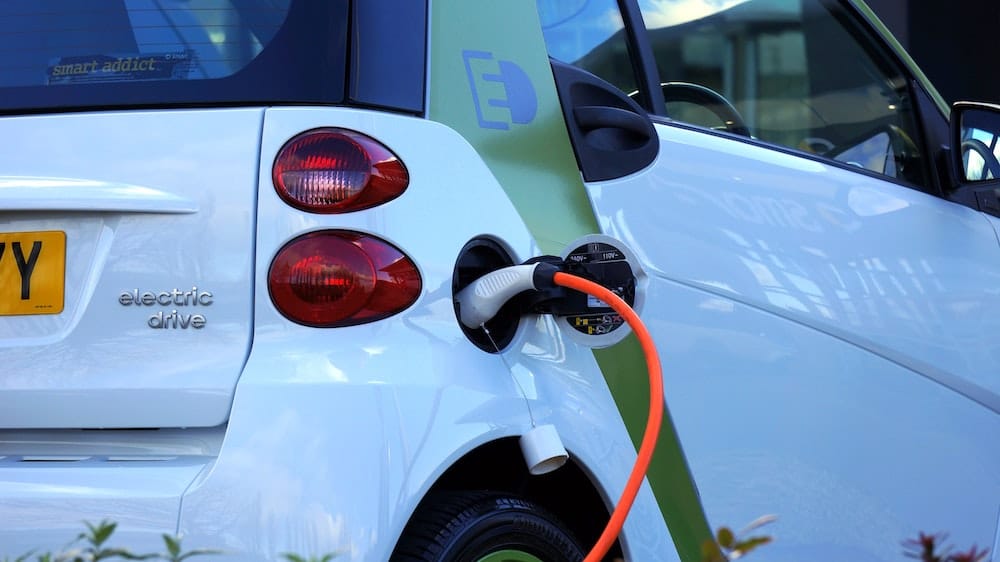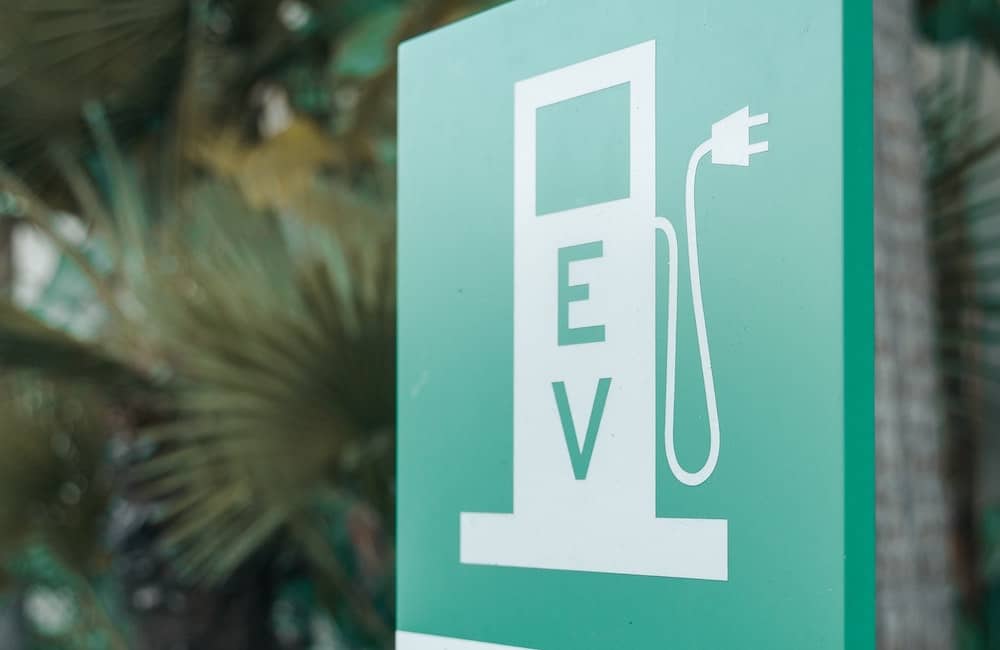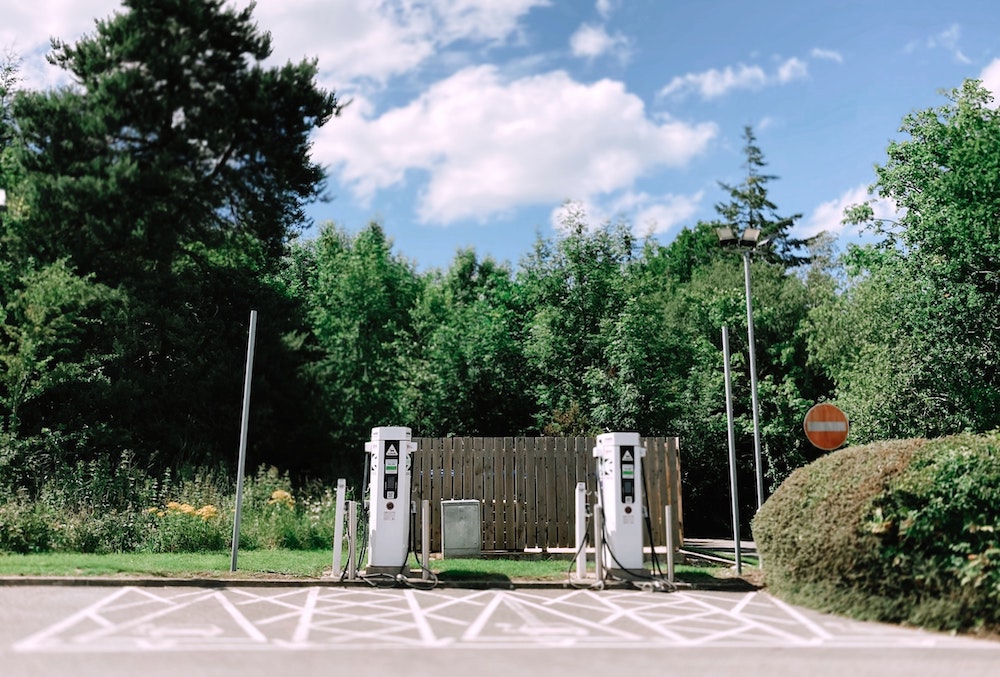With electric vehicles (EVs) quickly expanding across the market, it’s important for fleet operators to know the ins and outs of EV fleet management systems and fleet electrification. Many organizations are committing to sustainability and carbon emissions reduction by converting to EVs. Particularly because EVs have shown to be 3-5 times cheaper per mile than driving a gas-powered vehicle. But there are some serious challenges.
From transitioning to EV fleets to operating and maintaining them, we’ve compiled an essential guide for EV fleet management. Here are a few pieces of knowledge you as a fleet manager should consider when making this transition.
Let’s dive in.

While electric vehicles are making their way into the fleet industry and are leading fleet managers to sustainability, they still pose some challenges to managers and drivers alike.
One of the biggest challenges for fleet electrification and the fleet management industry as a whole is overcoming range anxiety and charging investment.
Knowing how far you can go before needing to charge your EV can be tricky, given that numerous factors affect driving range such as temperature, wind resistance, and weight. On top of that, planning driving routes – to and from work, local deliveries for businesses, or long trips – is not as simple as with an ICE vehicle. Diesel and gas pumps are far more common than electric charging stations (for now).
At the beginning of EV adoption, fleet managers must dedicate time to planning efficient routes around charging station locations. If fleet vehicles are parked overnight, that’s the ideal time to recharge. For vehicles that have little downtime, fleet drivers should consider alternating EVs so each can take a charging break.
Installing a charging station means going through local government permits and utility providers. This takes time and money.
EV chargers remain largely inaccessible in rural areas, suburbs, and even along highways. Most chargers are in high-density or city areas. This can increase range anxiety for drivers who have to make long-haul trips across different terrains and state lines.
Ultimately, planning efficient routes can be more difficult when compared to an internal combustion engine (ICE) vehicle.
While many electric cars from brands such as Tesla are readily available, the same cannot be said for commercial vehicles or electric trucks just yet. This can limit some fleets depending on the specific vehicles they need for the job.
While the market for electric trucks has expanded, it’s still difficult for fleets to obtain them. There is a high demand from companies looking to go green and the industry is still recovering from parts shortages.
Nevertheless, the industry is slowly making the turn. UPS placed an order for 10,000 electric delivery vehicles. Amazon too ordered an estimated 100,000 vehicles from Rivian.
FedEx even pledged to replace 100% of its pickup and delivery fleet with EVs by 2040.
For commercial vehicles traveling shorter distances, this makes a lot more sense. But for long-haul truckers, charging infrastructure and electric truck availability are still issues.

It’s no secret that EVs are more expensive than ICE vehicles due to their battery technology. As of 2022, the cost of an EV is around $56,437, which is about $5,000 more than the average price of an entry-level, luxury, ICE vehicle.
As EV technology improves, these vehicles will become more affordable. For now, though, their high upfront price makes them inaccessible to many smaller logistics companies.
Not only can this prevent them from transitioning to electrification, but it also creates barriers for many companies looking to go green on a budget. Keep in mind however, that there are numerous tax write-offs for going with an EV.
Some e-trucks are currently incapable of carrying the same load size as their ICE counterparts because of the size of their batteries. This could result in having to dispatch two trips for the same load a diesel truck could take in one. However, lawmakers are adjusting for this.
For example, Tesla’s new Semi is rated for towing up to 82,000 pounds. 2,000 pounds more than legally allowed for ICEs. All because lawmakers stepped in.
Perhaps an overlooked aspect of EV fleets is how new they are. This can make it harder to adopt due to fleet managers’ hesitancy over whether or not they will benefit their team.
Like with any new technology, switching over to EVs will come with some initial disruption and cause organizational challenges. Fleet managers will have to approach route planning and maintenance schedules differently.
Here are some ways to prepare for fleet electrification:
Also, drivers may need some time to adjust to driving an EV. Having additional education on the possible changes to your vehicle strategy regarding charging times, downtime, route changes, and using charging infrastructure is critical for a smooth transition.

One of the biggest transitions fleets will face with EVs is planning a new vehicle charging strategy.
Vehicles with extended dwell time for battery charge, such as overnight at a facility, will “fuel” or charge while parked. Other operational considerations may require different charging speeds for vehicles that need to resume operations quickly after returning to base
As of December 2021, there were 91,539 public Level 2 chargers, which are called ports. These are charging connections that can either charge two EVs at the same time or only have one connector and can only charge a single EV at a time.
These level 2 charging porters were located at 33,499 sites, with an average of 2.7 charging ports per location.
It’s important to have a comprehensive vehicle charging strategy for your EVs.
First, you’ll want to determine how many charging stations your business can support and afford. If you won’t have one for every EV in your fleet to charge overnight, determine a vehicle charging schedule that accommodates all of your vehicles.
Here are some steps to consider for developing a charging plan:
As a fleet manager, you will have to consider the charging status, speed of charging, wait times, and range of each vehicle so you can utilize it to the best of its capabilities.

To operate EV fleets efficiently, research needs to be done beforehand to minimize disruption. Although there are some expected challenges, taking the time to research what kind of vehicles are best used for what can help make for an easier transition. Here are some factors you should consider when operating and adopting EVs into your fleet.
What kind of vehicles does your fleet currently use, and for what purpose? What would be the best kind of EV to transition to?
Understanding the architecture behind different EVs will also help you choose the best for your business.

According to the Zero Emission Transportation Association’s (ZETA) analysis on zero-emission vehicle savings, the future of charging costs and EV lifespans are promising. Below are some key takeaways regarding fuel, mileage, and total lifespan costs.
When it comes to transportation costs, EVs win. Let’s take a look at how prices change when you transition to EVs…
Gasoline prices are inherently volatile since they are largely connected to foreign oil markets. As a result, what’s happening internationally will affect gasoline prices and fueling costs for ICE vehicles.
This differs from EVs because their charging costs are not dependent on global oil markets. Essentially, your EVs are not subject to the same price shocks, disruptions, and supply shortages that ICE vehicles face.
In contrast, electricity is cheaper than gasoline and is produced domestically from increasingly renewable and locally derived resources.
Not only are fuel costs cut down, but statistics from ZETA show that driving an EV is cheaper and possibly more efficient than an ICE vehicle:
Another essential part of understanding the total operating costs of your EV is understanding the lifespan and how it differs from an ICE vehicle:
Seeing how EVs compare against ICE vehicles is an effective way to understand which type of vehicle is best suited for your fleet. For example, seeing how an EV performs for 65,000 miles over three years could be an accurate guide to whether a fleet should transition to electric.

Because of their greater weight, EVs need larger calipers, rotors, and brake pads. These often need replacing sooner than their ICE counterparts as well. Similarly, EV weight demands that they have heftier suspensions.
Furthermore, EVs need heavier-duty cooling systems to ensure the battery and other electrical components don’t overheat. Battery maintenance for EVs includes regular checkups to ensure proper charging and capacity levels and overheating damage.

So, what does the future hold for electric vehicle fleets?
Although the road to EVs is paved with many present obstacles, fleet managers and drivers should expect these to dissipate over the coming decade. Additionally, recent ICE innovations push EV manufacturers to improve even faster to provide a viable competitor.
Whether we like it or not, the entire fleet industry is changing, so keeping on top of trends will help make future transitions easier.
Fleets can expect continuously improving electric vehicle battery life.
Today, many EV batteries easily last up to 10 years. The technology is only improving, so expect the battery cost and size to decrease and the longevity to improve.
This means you can expect longer battery life, less cooling needs, and lower weight for your EVs in the future.
Ease of maintenance is one of the many benefits of electric vehicles. Since EVs are electrically powered, there’s no need to change oil, inspect spark plugs, or replace piston rings, fuel filters, or catalytic converters…
Ultimately, fleet managers can expect a simplified maintenance process.
Charging infrastructure is expected to increase dramatically. According to Precedence Research, “the global electric vehicle charging station market size was estimated at USD 46.54 billion in 2022 and is projected to reach over USD 417.35 billion by 2030,”
That’s a significant increase.
Fleet owners can expect a dramatic upward trend in EV charging stations available over the coming decade.
Another advantage of an electric vehicle fleet is sustainability. Electric vehicles don’t release toxic gasses and can be a huge step towards less energy consumption and protecting the environment.
Similarly, EVs also produce less noise pollution. Electric motors make for quiet, smooth-driving vehicles. By investing in EVs, fleet managers can also present a trustworthy brand to clients by showing their environmental commitment.
Similarly, EVs also produce less noise pollution. Electric motors make for quiet, smooth-driving vehicles. By investing in EVs, fleet managers can also present a trustworthy brand to clients by showing their environmental commitment.

Although the electrification of fleets is on the rise, it’s up to you as to whether or not it will benefit your fleet. There’s still a long way to go regarding EVs’ obstacles. Still, as time passes, EV technology will continue to grow, transform, and shape the fleet industry.
If you’re considering transitioning to an EV fleet or need help managing your EV fleet, we’ve got you covered with our custom solutions to make your fleet management plan as easy as possible.
Whether you’re looking for support in route optimization, maintenance tracking, or more for your EV or ICE fleet, we are dedicated to providing you with adaptable fleet management solutions.
EV fleet management is largely similar to the management of a traditional fleet. The major differences are in maintenance, regulations, and daily charging.
EV fleet managers have to factor in different maintenance and repair needs as well as the availability of charging stops along routes. Managers also need to factor in electricity costs for on-site charging.
There are a variety of benefits EVs provide for you, your drivers, and the climate:
Psssst… Want to see how our fleet management tools can help you run your EV fleet effectively?
Grab a free demo.
Do it.
Do it now.
Right down here. ⬇️

Recent Posts
Categories
Stay in Touch
Ready to make fleet management more manageable?